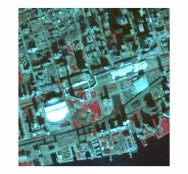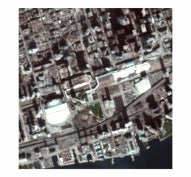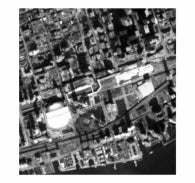Contact the Geospatial Centre
Dana Porter Library, Room 328
University of Waterloo Library
Waterloo, Ontario N2L 3G1
Email: librarygeo@uwaterloo.ca
Received from Toronto, 2006 infrared, colour and panchromatic imagery covering the entire city of Toronto. Imagery was captured in October 2006, and processed at a ground resolution of 5 metres.
These georeferenced and mosaicked TIFF image files are available in Universal Transverse Mercator (UTM) zone 17, North American Datum (NAD) 83 coordinate system. Colour and infrared TIFFs are 169 megabytes (MB) each, while the panchromatic TIFF is 56 MB.
To request this data, please fill out the Ask-Us form and include which layers (shapefiles) you are interested in obtaining. The dataset will be shared with you via OneDrive upon completion of the data release agreement form. You may also make an in-person appointment using the same form.
These data are provided for personal use for academic, research, and/or teaching purposes. Library staff will ask patrons to read and sign a data release agreement before these licensed data can be released. The City of Toronto, Geospatial Compentency Centre must be acknowledged on any derivative product, whether printed or electronic, including for example, a printed map, a raster or vector graphic, a web-based application, etc. Patrons are advised to fully respect the provisions of Canada's Copyright Act as well as terms and conditions imposed by the data provider.
City of Toronto 2006 orthoimagery [computer file]. Toronto, Ontario: City of Toronto Geospatial Competency Centre. [2006].
| infrared | colour | panchromatic |
|---|---|---|
 |
 |
 |
Dana Porter Library, Room 328
University of Waterloo Library
Waterloo, Ontario N2L 3G1
Email: librarygeo@uwaterloo.ca
The University of Waterloo acknowledges that much of our work takes place on the traditional territory of the Neutral, Anishinaabeg, and Haudenosaunee peoples. Our main campus is situated on the Haldimand Tract, the land granted to the Six Nations that includes six miles on each side of the Grand River. Our active work toward reconciliation takes place across our campuses through research, learning, teaching, and community building, and is co-ordinated within the Office of Indigenous Relations.
Select 'Accept all' to agree and continue. You consent to our cookies if you continue to use this website.